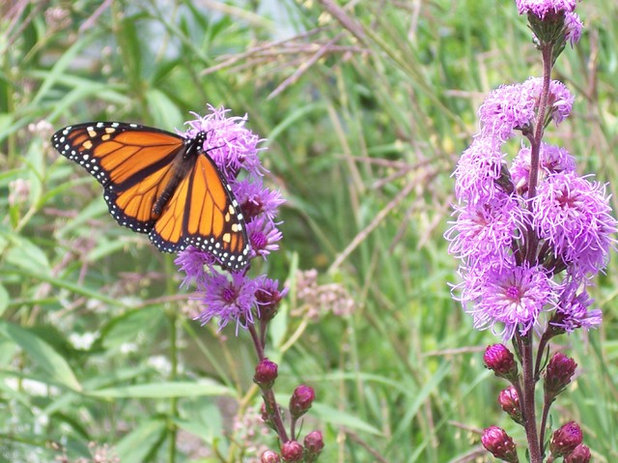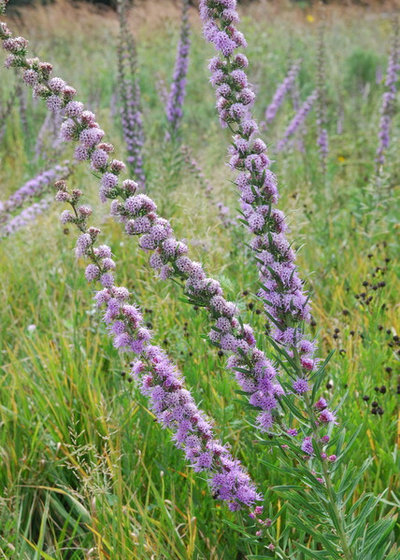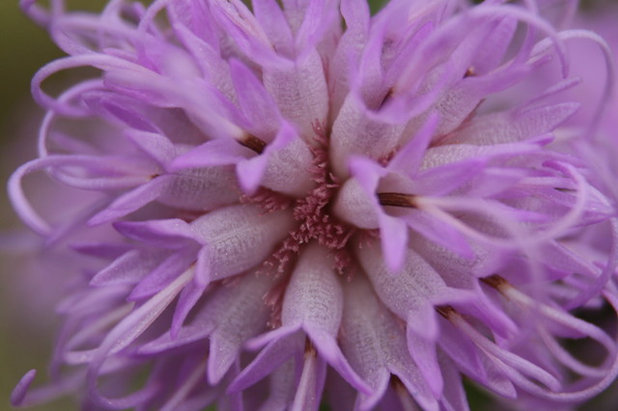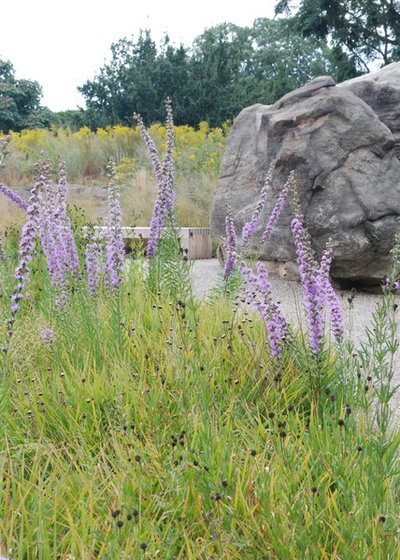Plant native wildflowers if you want a diversity of butterflies. If you want to attract butterflies during their peak season, from late summer into early fall, plant flowers that bloom during that time. Tall blazing star (
Liatris aspera) blooms from August into October, depending on your location, and will bring in all kinds of pollinators. With a narrow profile, this liatris will grow almost anywhere. And it thrives on tough love — just like I do.
 Photo by Scott Costello
Photo by Scott Costello

Paintbox Garden
Botanical name: Liatris asperaCommon names: Tall blazing star, rough blazing star, button blazing star, tall gayfeather, rough gayfeather
Origin: Native from the eastern Dakotas and Wisconsin south to eastern Texas, Louisiana and Arkansas
Where it will grow: Hardy to -40 degrees Fahrenheit (USDA zones 3 to 8; find your zone)
Water requirement: Dry to medium soil
Light requirement: Full sun to some shade
Mature size: 2 to 4 feet tall and 1 foot to 2 feet wide
Benefits and tolerances: Does great in dry soils, from clay to sandy to slightly rocky; may flop in rich loams
Seasonal interest: Blooms in late summer to midfall
When to plant: Potted or bare-root plants can be planted from spring to fall; seed in late fall through winter.

Benjamin Vogt / Monarch Gardens

Paintbox Garden
Dinstinguishing traits. This is one of the latest blazing stars to bloom and is a favorite of butterflies, bees and other long-tongued pollinators. It flowers from top to bottom and will develop several spikes as the years go on (and as the underground plant stem, called a corm, gets bigger). Although the bloom time is relatively short, a week or two, you can extend the liatris season by planting other species, especially meadow blazing star, which looks very similar but whose native range is in the northern Plains and Midwest.
How to use it. With such a small footprint and a good vertical presence, tall blazing star can fit almost anywhere. It’s striking en masse and in groups but can get lost among taller perennial flowers that bloom at the same time in early fall, like goldenrod (
Solidago spp) or some sunflowers (
Helianthus spp). It tends to attract more butterflies if planted out in the open. (Maybe the insects find it a safer place to perch, away from any predators, like mantids or spiders.)
Planting notes. Some places sell this liatris when it’s dormant, which means there’s just the corm. Plant it like a bulb, about as deep as the corm is wide. Dry soil is best — clay to sand to rocky — but it does fine in a medium-moisture soil in full sun. Stay away from rich soils; like many prairie wildflowers, it will grow too tall and flop over. It’s adjusted to living a harsh life, so let it have it.
More:Learn more about gardening with native plants in your area
See 6 steps to creating a butterfly garden





